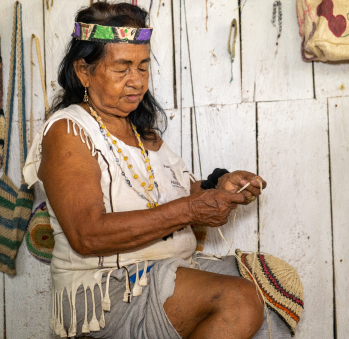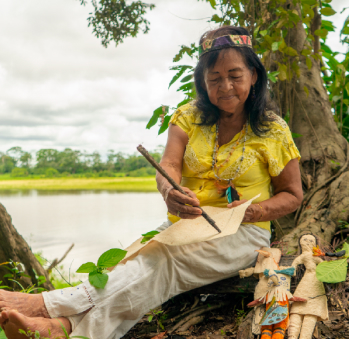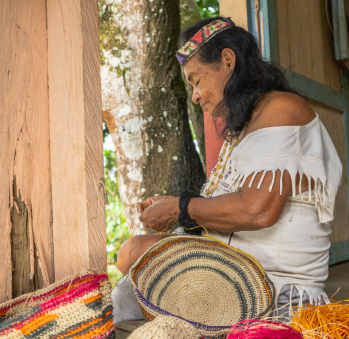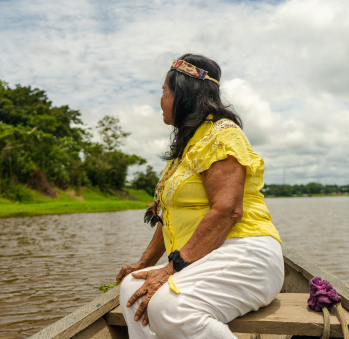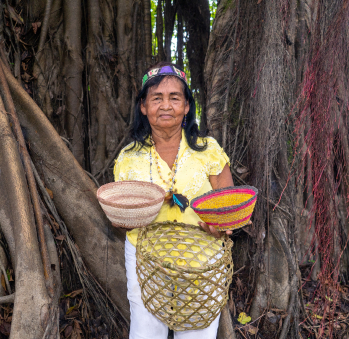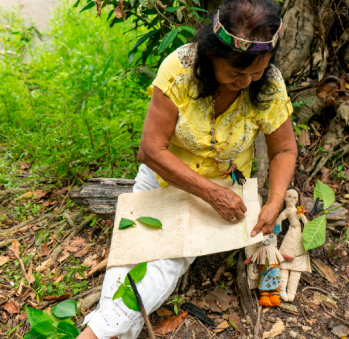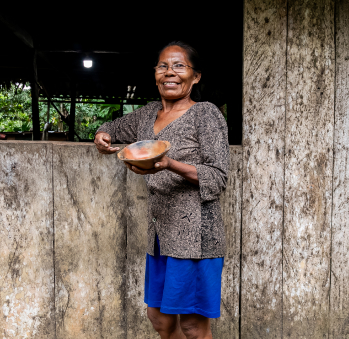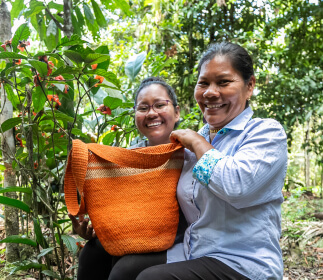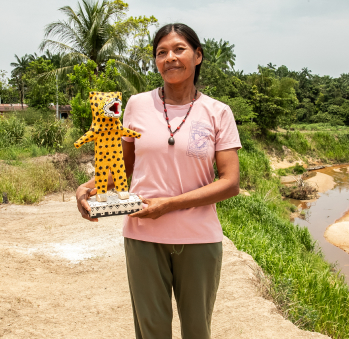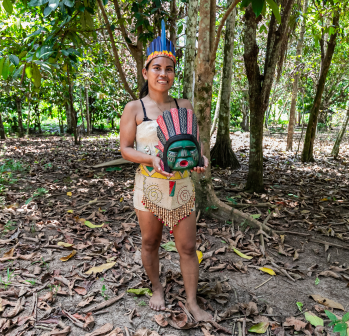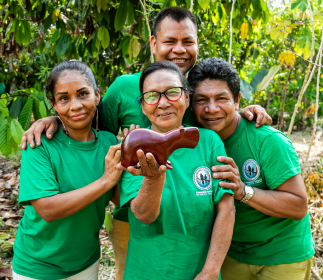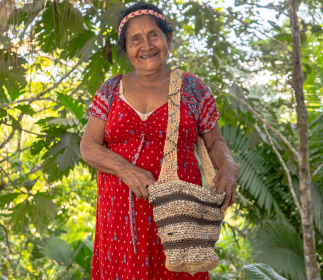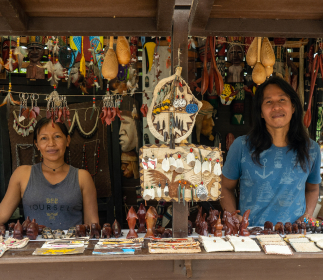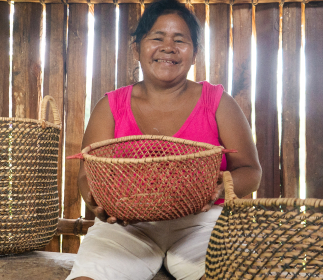Alba Lucía Cuéllar
SCHEDULE YOUR VISIT
Casco Urbano de Puerto Nariño
3224028818
3115436665
3124101925
turismoycultura@gmail.com
She is the loved and adored grandmother of Puerto Nariño. She is a generous woman who passionately tells the story of the Tikuna people. They are descendants of Nutapa and his children, Yoi, Mowacha, Ipi, and Aikia. She likes to tell this story, and, in fact, she does it as a way of preserving her ethnic identity. Thus, she sings and dances every myth represented in some symbol of nature.
She can draw many of the figures that symbolize her beliefs. She skillfully makes them with yanchama fibers while sitting on the floor of her workshop. It is easy to find her rolling chambira with her fingers while she rests over her left leg. Of course, the dolls she makes are not mere dolls: they contain the spirits of nature and have very specific uses. Some of them are employed to protect men when hunting so they do not get eaten by jaguars and so they can find their way home if they get lost.
Many of them are made to accompany and protect children. Everything she makes with her hands is a song for life. This is how she pays tribute to it: she crafts boa-constrictor children and frog, dragonfly, curupira (a mythological creature), butterfly, anteater, hummingbird, monkey, tapir, eel, macaw, mermaid, female cricket, and wasp —among other— participants for her festivals. Each one has a figure and a story that is worth hearing through her warm song.
Although Alba Lucía grew up on the banks of the Totumo creek, very close to Nazareth, she went to Puerto Nariño with her grandfather at a very young age. She started her own family in Puerto Nariño. She learned the art of weaving from her mother. The latter used to make the baskets they used to collect pineapple, cassava, yam, and plantain from the family chagra. She also taught Alba Lucía how to weave the sieves used to make chicha and masato (fermented drinks). She quickly learned how to make the hand-woven chinchorro hammocks in which life swings, procreates and rests. While she makes manioc flour and prepares the cassava that feeds her family, she keeps on weaving. She always sings while she weaves.
She, a member of the Cascabel clan, lives and works together with her husband Leonardo, who is from the Paucara clan. He has a vocation for crafts, just like her. People of all ages go to her to learn how to weave with yanchama and chambira. They learn from her hands how to harvest the fiber from the chagra, how to remove the thorns, how to wash the buds, and how to finally twist and dry the fiber. Without worrying about how much time it takes, she tells people about her world: she preserves it.
Craft
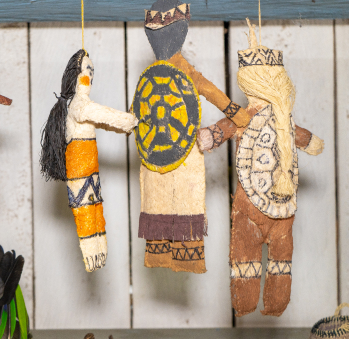





Artisans along the way
Artisans along the way
No puede copiar contenido de esta página









































